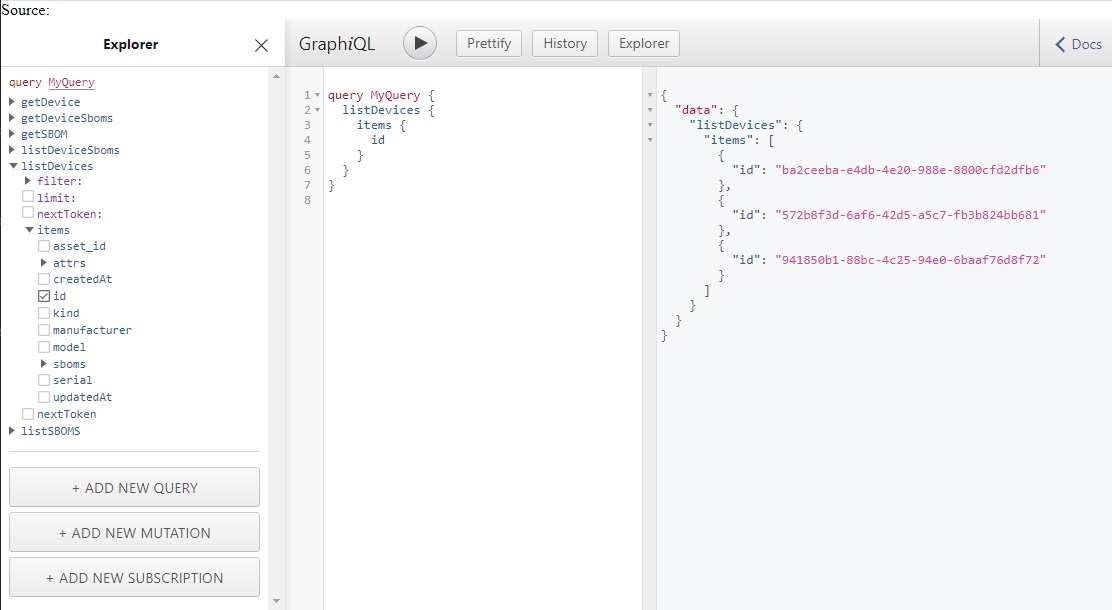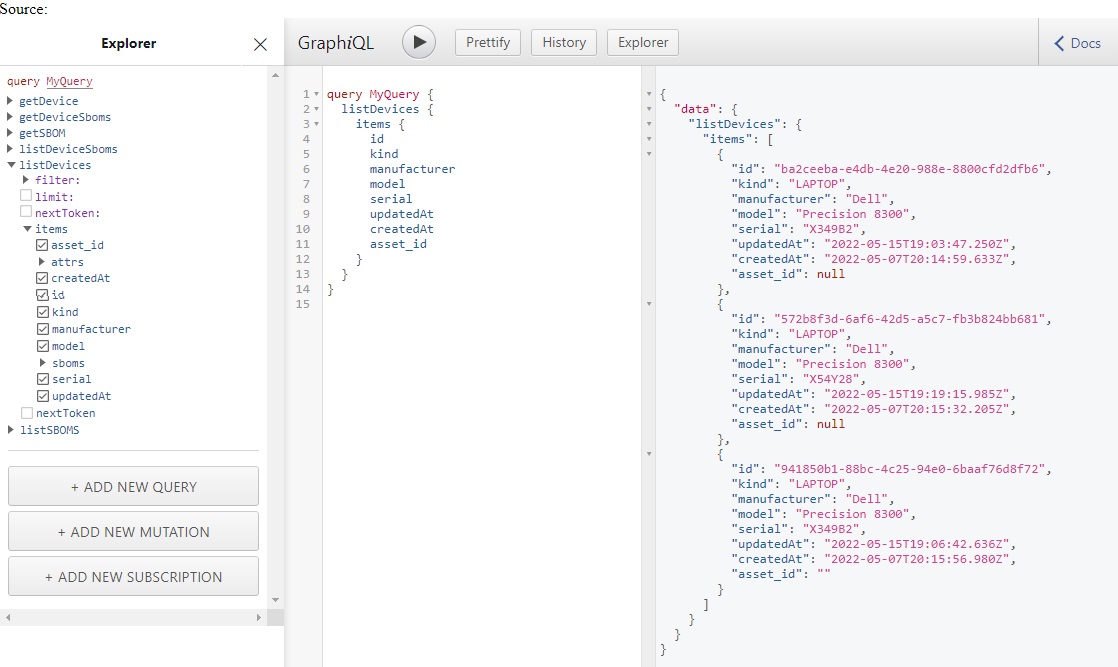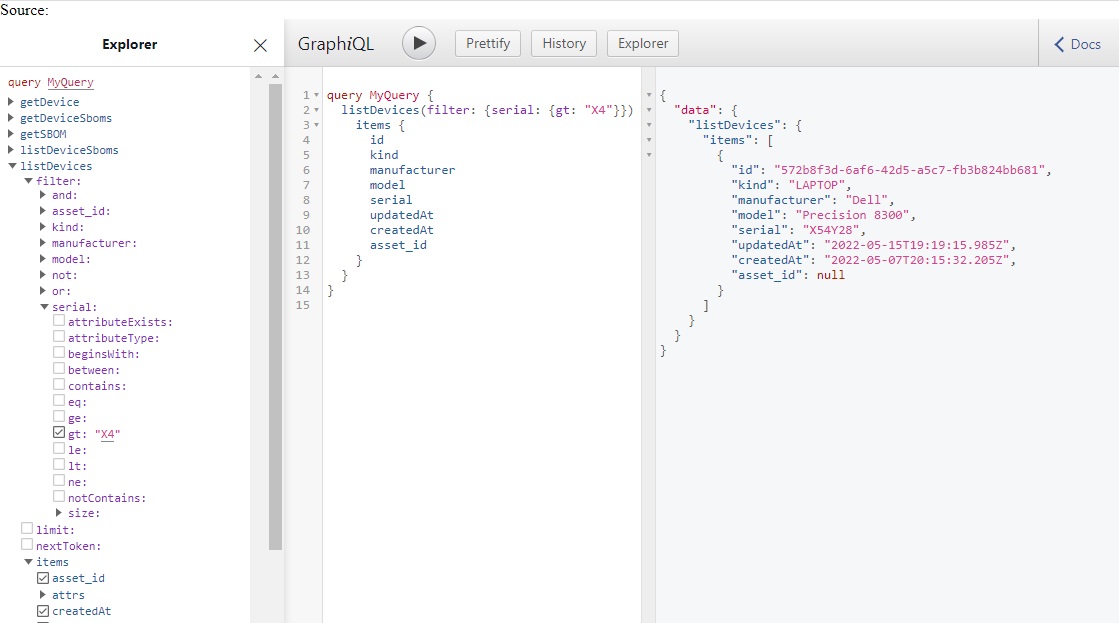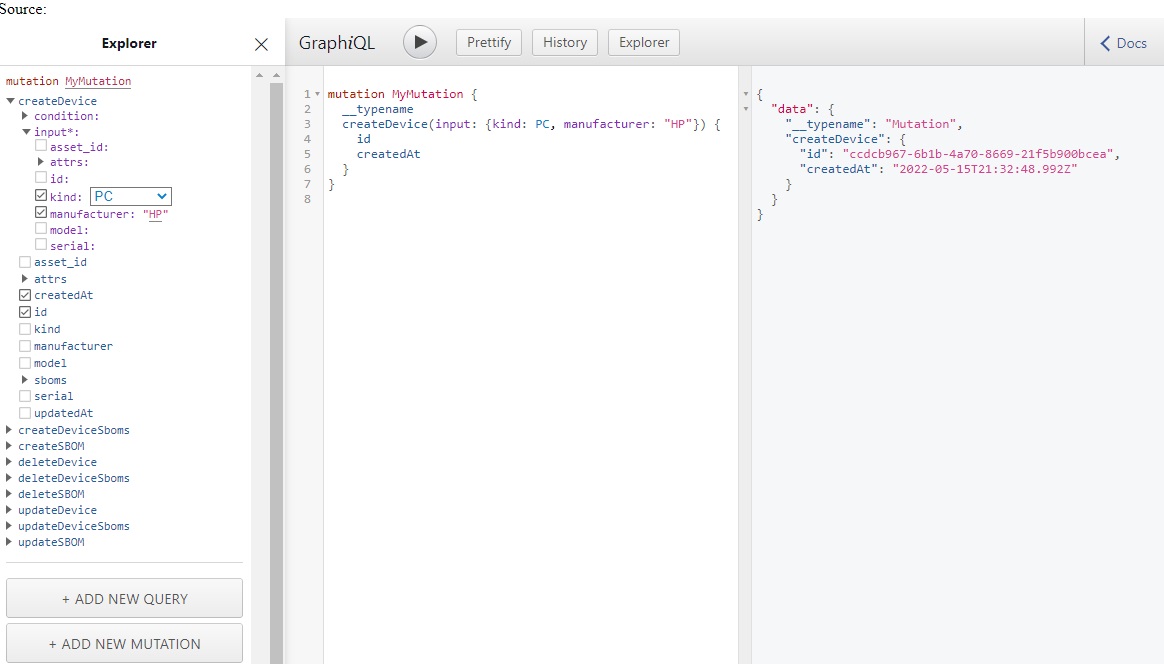Posture Attribute Repository
The Security Posture Attribute Collection and Evaluation (PACE) Architecture includes a Posture Collection Service (PCS), Posture Evaluation Service (PES), and Posture Attribute Repository (PAR). The PCS is an OpenC2 Consumer that collects information as directed using the Posture Attribute Collection (PAC) actuator profile, which defines the format of collection commands and responses. The PCS then stores posture information for each device in the PAR.
The PAR Schema includes:
- Device information as supplied by an IT Asset Management service
- Posture information as collected from Devices by the PCS
The Posture portion of the PAR Schema is defined by the Results portion of the PAC actuator profile. The PAR Schema is translated into GraphQL Schema Definition Language (SDL) for deployment. This manual translation derives the PAR API from the PAC actuator profile.
Querying the PAR
- Open the PAR Proof of Concept using GraphQL Explorer, then click the Explorer button to open the explorer pane.
- In the Explorer under MyQuery, open
listDevicesthenitems. You should see device information (id, manufacturer, model, serial, etc.) plus posture information underattrsandsboms. -
In the GraphiQL pane, click the Run button to execute the query. The
idfield should be added to the query automatically, and the list of device IDs should appear in the results pane:
-
Check additional boxes under “items” to add them to the query, then run the query again:

- Open the
filterlist, thenserial, and undergttype “X4” and run the query. Only devices with serial numbers that match the filter should be listed:
Updating the PAR
The Posture Collection Service uses Mutations to update the contents of the PAR.
-
Click “ADD NEW MUTATION”, select
createDevice, then underinputselect akindfrom the menu and type amanufacturername. Select some results to display (e.g., ‘id’ and ‘createdAt`) and run the mutation:
- Open the History pane, select the second MyQuery from the top (without the filter)
and run it. The results should show the newly-created device with
nullfor fields that were not included in the createDevice. - Copy the
idfield for the new device, click “ADD NEW MUTATION”, selectdeleteDevice, paste the id into the inputidfield, run the mutation, then run thelistDevicesquery again to show that the newly-created device is gone.
PAR Python API
PACE Software includes a script to initialize the PAR with example Device and SBOM data. This illustrates how to operate the PAR using the GraphQL API.
Note that the PAR proof of concept has no access controls and is shared by all CAW participants. Please play nice.